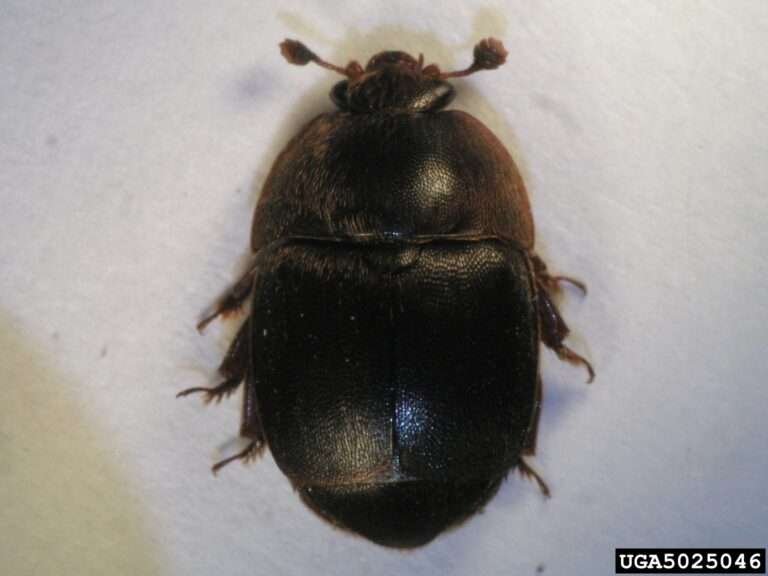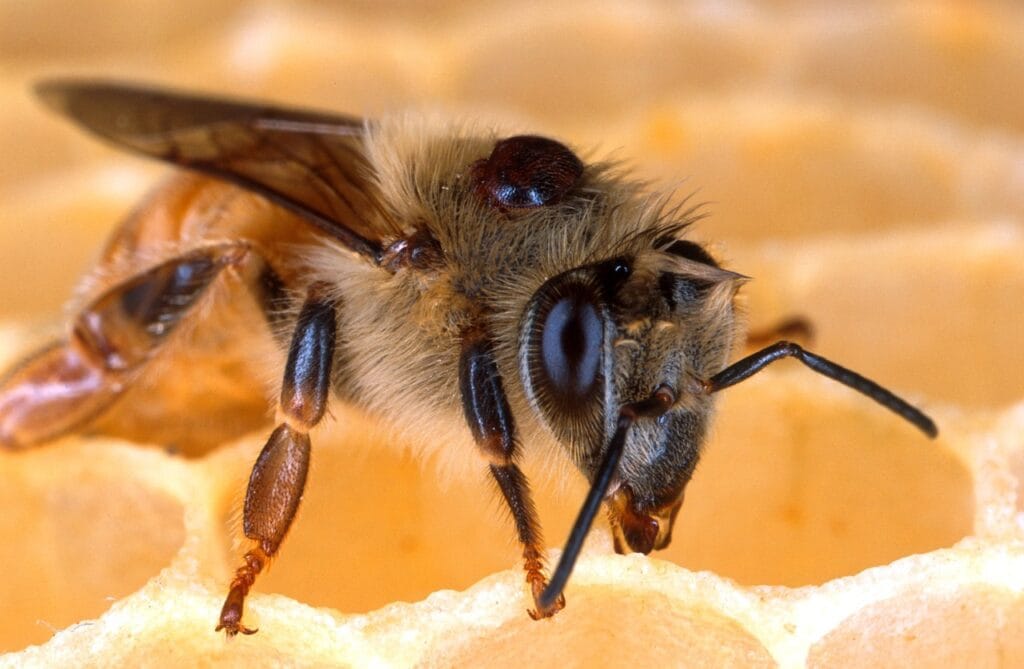Small Hive Beetle – By James D. Ellis – This image is Image Number 5025046 at Invasive.org, a source for images of invasive and exotic species operated by The Bugwood Network at the University of Georgia and the USDA APHIS Plant Protection and Quarantine program., CC BY 3.0, https://commons.wikimedia.org/w/index.php?curid=8187533
Learn ways to manage the Small Hive Beatles (SHB) in your bee hive
Managing Small Hive Beetles (SHB) in your bee hive requires an integrated approach focused on prevention, monitoring, and a combination of cultural, mechanical, biological, and chemical controls, if needed.
Key management practices include:
- Keep colonies strong and healthy: Strong hives with healthy populations can outcompete and suppress SHB. Avoid weak or queenless colonies, as these are more vulnerable. Address any issues with diseases, mite infestations, or poor queens promptly[1][2].
- Location matters: Place hives in sunny, well-ventilated spots. SHB prefer dark, shady, and damp areas. Sun exposure desiccates the beetle eggs and larvae, reducing their survival rates[3][4].
- Good hive management: Remove dead or weak colonies promptly. Don’t give colonies more space than the bees can patrol, as unused comb and empty frames provide hiding places for beetles. Clean up burr comb, propolis, and debris regularly. Store unused comb and brood frames in a freezer or extract honey quickly to prevent infestation[2][1].
- Clean apiary: Keep hive equipment and the surrounding area clean. Debris and old hive equipment attract beetles, as do fallen comb scraps[3][2].
Mechanical and other controls:
- Beetle traps: Use in-hive traps (such as oil traps, Swiffer pads, or baited traps) to capture adult beetles. Traps are designed so beetles enter but bees cannot. Some popular options include ‘beetle blasters’, Swiffer pads, oil trays under screened bottom boards, and homemade traps with fermenting fruit baits[5][2][4].
- Physical barriers: Place cardboard, tarps, or gravel beneath hive stands to prevent SHB larvae from reaching soil to pupate. Paving or using mulch can also help by exposing larvae to lethal sunlight[4][6].
- Biological controls: Soil-dwelling beneficial nematodes (available commercially) can be applied around hives to kill SHB larvae as they pupate underground. Effectiveness varies with soil type and conditions[2][3].
- Manual removal: Regularly inspect hives, and squash adult beetles when seen – especially under the lid or in frame corners[6].
Chemical controls (as a last resort):
- In-hive chemicals: Checkmite+ (containing coumaphos) is registered for in-hive treatment of SHB, but only apply according to label instructions and never when honey supers are present[1][2][4].
- Ground treatment: GardStar, a soil drench, can be used to kill SHB pupae in the ground, applied around hive stands[1][2][4].
- Always strictly follow chemical label directions and regulations to prevent contamination of honey and wax.
Additional recommendations:
- Monitor regularly: It is normal to see a few beetles in most hives. Severe infestations (large numbers of beetles and visible larvae or slime) require immediate intervention[5].
- Don’t overfeed pollen substitute: Give only as much as bees can consume quickly, as excess can support SHB reproduction[1][7].
- Varroa mite control: Keeping varroa mite levels low supports overall colony strength and makes bees better able to manage SHB themselves[5][7].
There is no way to completely eradicate SHB, but these steps will keep their population under control and minimize hive losses[7][3][2].
⁂
https://www.reddit.com/r/Beekeeping/comments/12pg2o4/how_to_end_hive_beetles/
https://www.ars.usda.gov/southeast-area/baton-rouge-la/honeybeelab/docs/small-hive-beetles/
https://bee-health.extension.org/managing-small-hive-beetles/
https://txbeeinspection.tamu.edu/small-hive-beetle/
https://galenafarms.com/blogs/maintaining-a-hive/how-to-kill-small-hive-beetles
https://www.beekeepingmadesimple.com/blog/small-hive-beetle-traps
https://www.homesweetbees.com/q-a/2016/7/20/how-to-save-one-remaining-hive-from-small-hive-beetles
Ad – Amazon Associate Store









